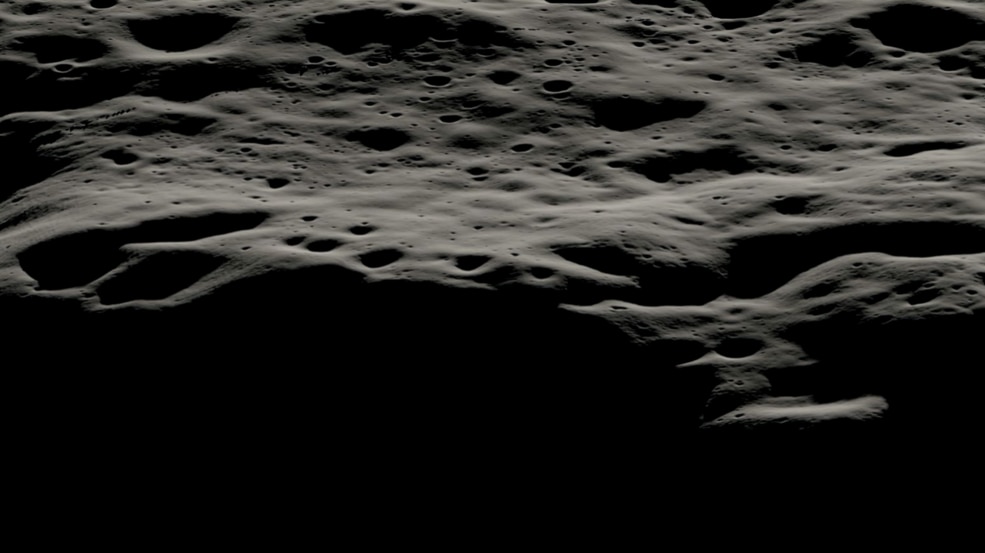Create a free profile to get unlimited access to exclusive videos, sweepstakes, and more!
Now we know where NASA’s Artemis rover VIPER is making its lunar landing - just go where the water is

When astronauts land on the Moon again, there won’t be much time to seek out frozen water. They will have to know exactly where it is.
Our radiation-stricken, inhospitable Moon is pockmarked with craters whose shadows have remained dark enough for water ice to remain for millions and even billions of years. That water is going to be invaluable for Artemis astronauts. Not only will they be able to use that ice for drinkable water, but also breathable air and even (especially when the Moon becomes a way station to Mars) rocket fuel. The thing is, you have to find that water first.
Enter NASA’s VIPER (Volatiles Investigating Polar Explorations Rover). VIPER lead project scientist Anthony Colaprete, of NASA Ames research center, and his research team have finally decided where they are going to land VIPER to maximize results. It will touch down on the edge of the Moon’s permanently shadowed Nobile crater and then crawl to at least six other sites.
“One of the most important questions VIPER will address is the origin of lunar water,” he told SYFY WIRE. “What are the various sources? How is it retained and lost? We believe that temperature is a critical factor in retaining water on the Moon and the VIPER mission area provides a range of temperature environments for us to explore."
VIPER will scour the lunar surface and subsurface for water and other resources the space agency won’t have to worry about the astronomical costs of adding to a manned mission’s payload—never mind the weight. Lighter payloads are always safer payloads. Some of the craters Viper will be investigating are thought to be over 3.5 billion years old. The samples it will extract from these craters could possibly tell us how water ended up on the Moon back in the depths of time, which can also help us understand how it came to to the inner solar system.
It is possible that, as some scientists have theorized about Earth, water was brought to the Moon by comets and icy asteroids from the solar system’s edge. These space rocks and chunks of ice smashed into the Moon and left some of themselves behind on impact. It could explain why there is probably an abundance of water ice in many lunar craters today, the shadowed areas of which have remained frozen because they never see the harsh light of the Sun. VIPER is also going to search for other resources that can be useful far away from the home planet.
“Other potential resources include carbon dioxide ice and ammonia — both contain potentially useful elements (carbon and nitrogen) as well as oxygen and hydrogen,” said Colaprete. “VIPER also will characterize the regolith, including its geotechnical properties. These observations will help inform us how to work with the regolith as a building material.”
Regolith alone can’t build a lunar (or Martian) habitat. Recent experimenting with regolith simulants and other ingredients found that human blood and urea, the acid from sweat, tears or urine, make amazingly strong binders. Astronauts also keep producing them. This cement would be able to block out intense surface radiation and withstand a shower of micrometeorites. VIPER will use all four of its instruments to search for and analyze water and other volatiles, or substances that vaporize easily, in both solid and gaseous form.
The instruments VIPER is equipped with are a mass spectrometer, near-infrared spectrometer, neutron spectrometer and a drill. It is the mass spectrometer and near-infrared spectrometer which will beam back anything they find on ice and other volatiles. The neutron spectrometer will work with them simultaneously, looking for hydrogen buried up to three feet deep. These three hypersensitive instruments detect volatiles and hydrogen as the rover keeps creeping through craters and drilling wherever it finds something that needs to be sampled.
When VIPER does find something, it will drill a small segment that will then be examined by its mass spectrometer and near-infrared spectrometer. Colaprete wants a more accurate idea of water content and distribution on the Moon.
“Knowing the distribution of water and other resources is fundamental to understanding the potential sources and sinks of lunar water,” he said. “These observations will tell us how water is distributed with depth,” he said. “The drill itself will also provide data on the presence of water by measuring the strength of the material we are drilling into, which is a function of water content.”
There are questions about lunar water that the Moon hasn’t yet answered. How even is the distribution of all this ice? It could be random, with ice found wherever impact craters formed, or it could be more even for whatever reason, which would be a plus for astronauts. Next to volatiles and hydrogen, VIPER will also be seeking out isotopes that might match those on ancient comets or asteroids. Deuterium is one isotope the team will have an eye out for. The ratio of deuterium to hydrogen is seen as evidence for asteroids flying water over to Earth.
Another thing VIPER will have on its radar are molecules left over from volcanic activity. Lava tubes are another potential lunar habitat, and those tubes were formed when the Moon was still spewing magma in its raging youth. Whatever the VIPER team can find out about the Moon’s origins and evolution could possibly support or dismantle theories about how water landed there and how the bodies in the solar system, including Earth, came into being.
“VIPER is so much more than just a resource mapping mission,” Colaprete said. “It will provide fundamental data on the current state and history of water on the Moon and hence the history of water in the inner solar system.”














